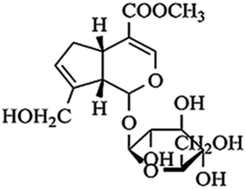Geniposide attenuates Aβ25–35-induced neurotoxicity via the TLR4/NF-κB pathway in HT22 cells
Abstract
Alzheimer's disease (AD), a neurodegenerative disorder, is marked by the accumulation of amyloid-β (Aβ) and neuroinflammation which promote the development of AD. Geniposide, the main ingredient isolated from Chinese herbal medicine Gardenia jasminoides Ellis, has a variety of pharmacological functions such as anti-apoptosis and anti-inflammatory activity. Hence, we estimated the inflammatory cytotoxicity caused by Aβ25–35 and the neuroprotective effects of geniposide in HT22 cells. In this research, following incubation with Aβ25–35 (40 μM, 24 h) in HT22 cells, the methylthiazolyl tetrazolium (MTT) and lactate dehydrogenase (LDH) release assays showed that the cell survival rate was significantly decreased. In contrast, the reactive oxygen species (ROS) assay indicated that Aβ25–35 enhanced ROS accumulation and apoptosis showed in both hoechst 33342 staining and annexin V-FITC/PI double staining. And then, immunofluorescence test revealed that Aβ25–35 promoted p65 to transfer into the nucleus indicating p65 was activated by Aβ25–35. Moreover, western blot analysis proved that Aβ25–35 increased the expression of nitric oxide species (iNOS), tumor necrosis factor-α (TNF-α), cyclooxygenase-2 (COX-2) and interleukin-1β (IL-1β). Simultaneously, Aβ25–35 also promoted the expression of toll-like receptor 4 (TLR4), p-p65 and p-IκB-α accompanied with the increase in the level of beta-secretase 1 (BACE1) and caspase-3 which further supported Aβ25–35 induced apoptosis and inflammation. Fortunately, this up-regulation was reversed by geniposide. In conclusion, our data suggest that geniposide can alleviate Aβ25–35-induced inflammatory response to protect neurons, which is possibly involved with the inhibition of the TLR4/NF-κB pathway in HT22 cells. Geniposide may be the latent treatment for AD induced by neuroinflammation and apoptosis.



 Please wait while we load your content...
Please wait while we load your content...